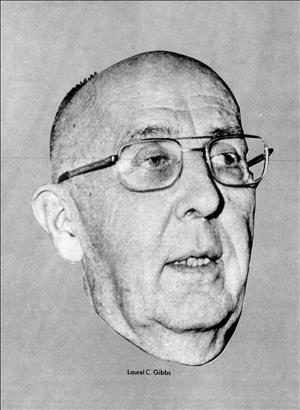Among his many achievements as a civic activist, Seattle attorney Jim Ellis (1921-2019) led the campaign to clean up Lake Washington, pushed for development of the Washington State Convention Center, and founded the Mountains to Sound Greeway Trust. In this excerpt from his memoirs, Ellis writes about his friendly relationships with a father – Laurel Gibbs, the former mayor of Winlock and a friend of Ellis's law firm – and his son Tom Gibbs, who became Executive Diretor of Metro.
Two Engineers
I first met Laurel Gibbs, Tom Gibbs's father, in the early 1950s, when he caused several towns to retain the Preston firm as bond counsel for their street and utility projects. Laurel was an able and careful engineer with a strong civic streak. He served on the Winlock Town Council for 27 years and was the mayor of Winlock for 10.
Metro’s first executive director, Harold Miller, had recruited a young engineer, Charles V. (Tom) Gibbs, from the Washington Pollution Control Commission (PCC) in 1959. Hal was quickly impressed with Tom’s ability and pragmatic idealism. After several advancements, Tom was promoted to assistant executive director and in 1967 succeeded Fred Lange as executive director. He was well prepared for this role and knew every inch of the Metro sewer system. Excited by the new Forward Thrust idea, he volunteered for and was appointed to the Committee of 200. Tom understood water pollution from A to Z and the special difficulty the City of Seattle was having with its 60-year-old combined system. He was challenged to help solve the difficult problems created by rainwater surges in combined sewers.
Laurel Gibbs graduated in engineering from Ohio State in 1922 and his uncle "out West" helped Laurel get a job with Long Bell Lumber Company. Long Bell had just purchased thousands of acres of Southwest Washington timberland from the Weyerhaeuser Corporation and was beginning its operation. Laurel’s assignment was to survey the new "planned city" of Longview, and his uncle became that city’s first mayor. After a year in Longview, Laurel was sent to Riderwood, which was being developed as a logging base camp. He spent seven years there conducting survey work on logging railroads being built into the rich, Southwest Washington timberland.
In 1929, Laurel was invited to go on a blind date with Margaret Randt, a schoolteacher from Sedro Woolley who was spending the summer with her parents in Winlock. He traveled frequently to Sedro Woolley that summer, arriving late on a Friday and returning to Riderwood late on Monday mornings. In June 1930, the two were married and spent their honeymoon in Montana, where Laurel was working on road surveys. His survey projects included the White Pass Highway, the road between Megler Ferry and Ilwaco, and the road from Mount Hood to Madras, Oregon.
Tom was born while Laurel and Margaret were living in the old Battle-Ax Inn at Timberline, on Mount Hood. In 1935, Laurel was hired by the Washington Highway Department as maintenance engineer covering Southwest Washington. In 1946, newly elected governor Mon Walgren insisted Laurel fire all Republicans working in his department. Laurel refused and left the job to start his own engineering firm with the city engineer of Centralia, Oscar Olson.
Laurel’s new company, Gibbs and Olson Engineering, employed two or three survey crews to work on logging roads and timber surveys. During the course of this work, Laurel became city engineer on a retainer basis for several small timber towns rising across Southwest Washington. He designed many of the new roads, waterlines, and sewer systems in these towns.
Laurel and Margaret’s son Tom grew up in Winlock and graduated from Winlock High in 1949. That fall, Tom met his wife Jean, who had moved with her family from Chicago. Their first date was on December 21 of that year and the romance flourished, culminating in their marriage on September 12, 1953. Jean worked during Tom’s last year at the University of Washington and helped put him through college.
Soon after graduation, Tom was called into the Air Force and stationed at Beale Air Force base in Long Beach, California, where he worked as an installation engineer. While at Beale, their daughter Claudia was born at the base hospital in 1956. Following Tom’s discharge from the Air Force, he joined the staff of the Washington Pollution Control Commission (PCC) in Olympia as a district engineer for Southwest Washington. The next year, the couple’s second child Todd, was born in Olympia in 1958.
Tom Gibbs, hired as Metro’s third employee in 1959, had been groomed by Hal Miller to be his eventual successor and to help establish disciplined research practices and state-of-the-art technology. Tom’s subsequent tenure as Executive Director covered critical years of new Metro achievements. He became a trusted leadership voice for Metro and a role model for its employees.

